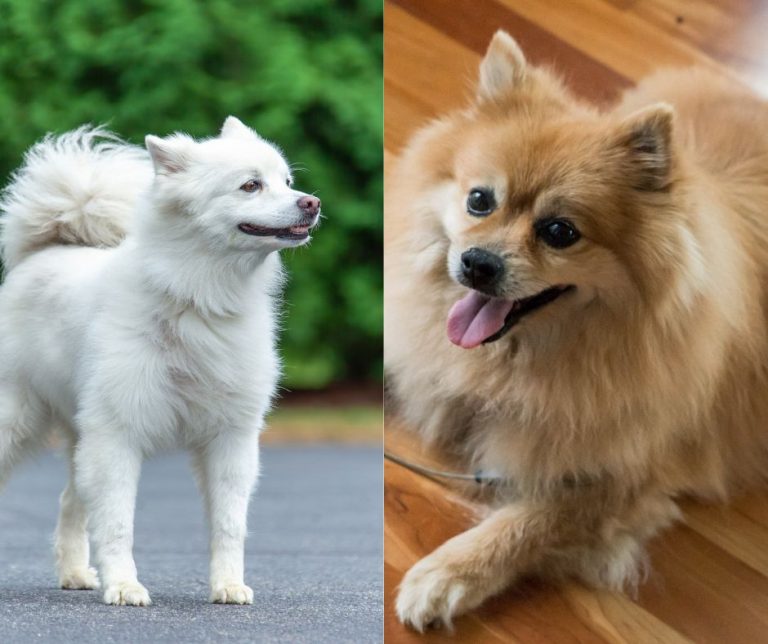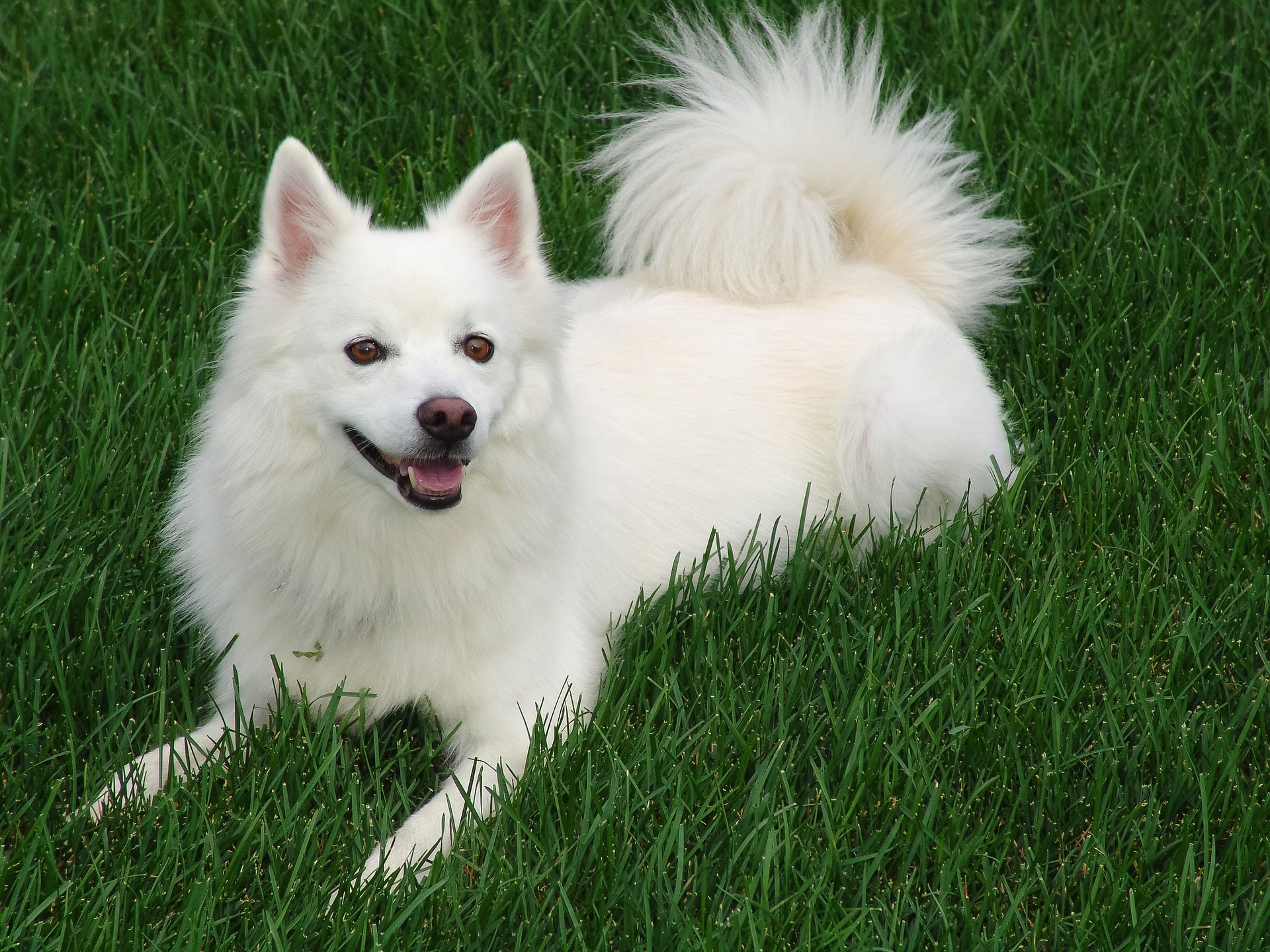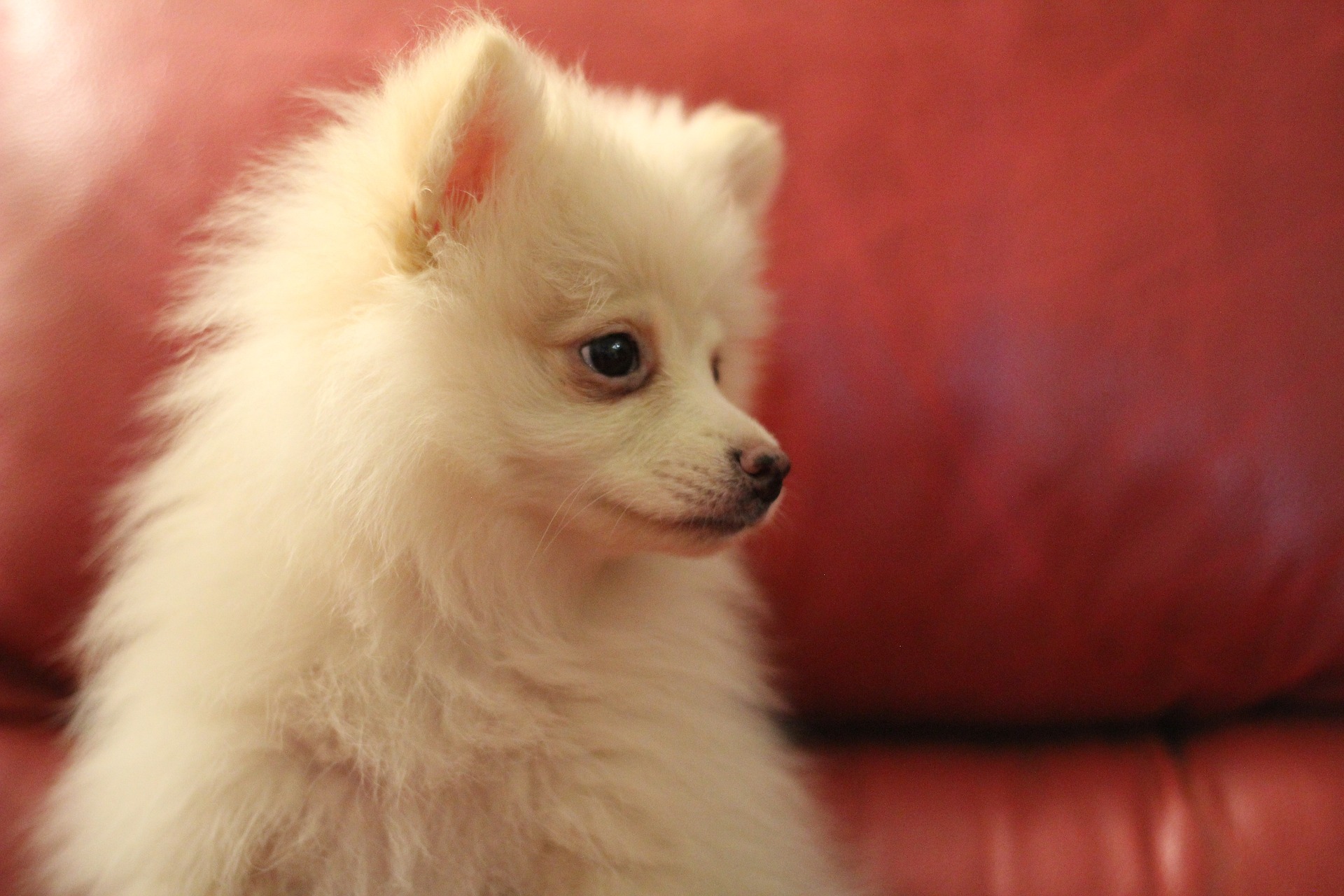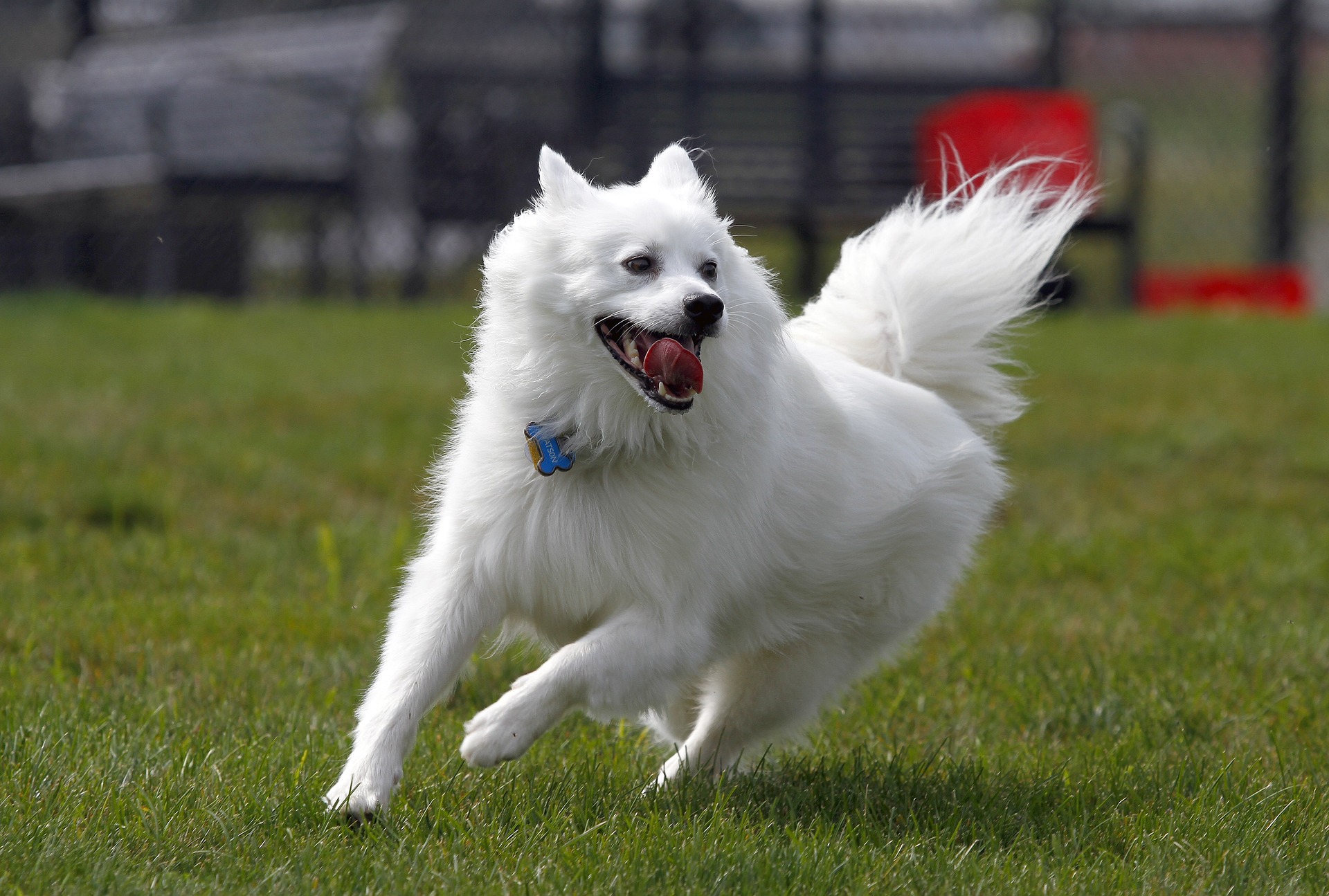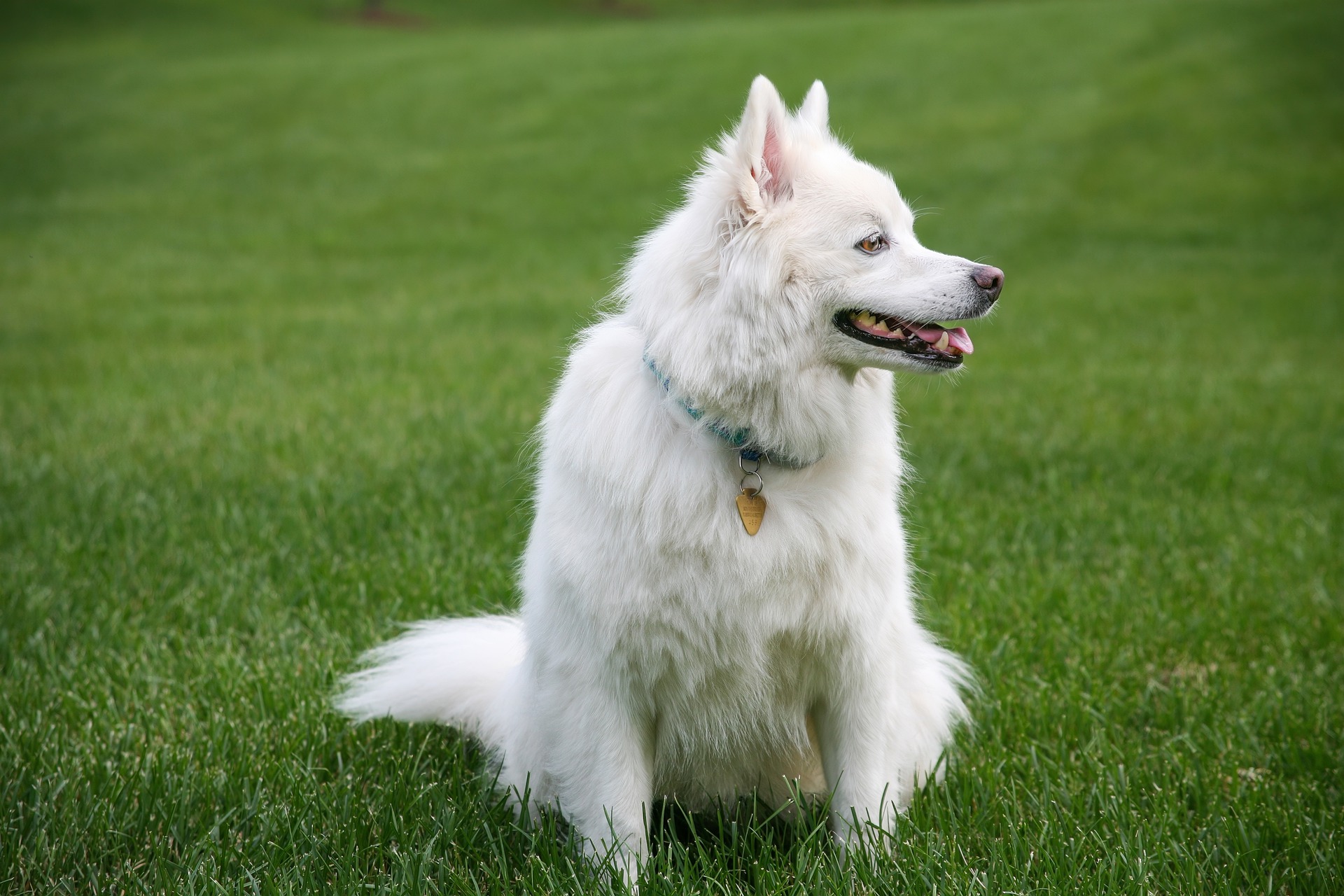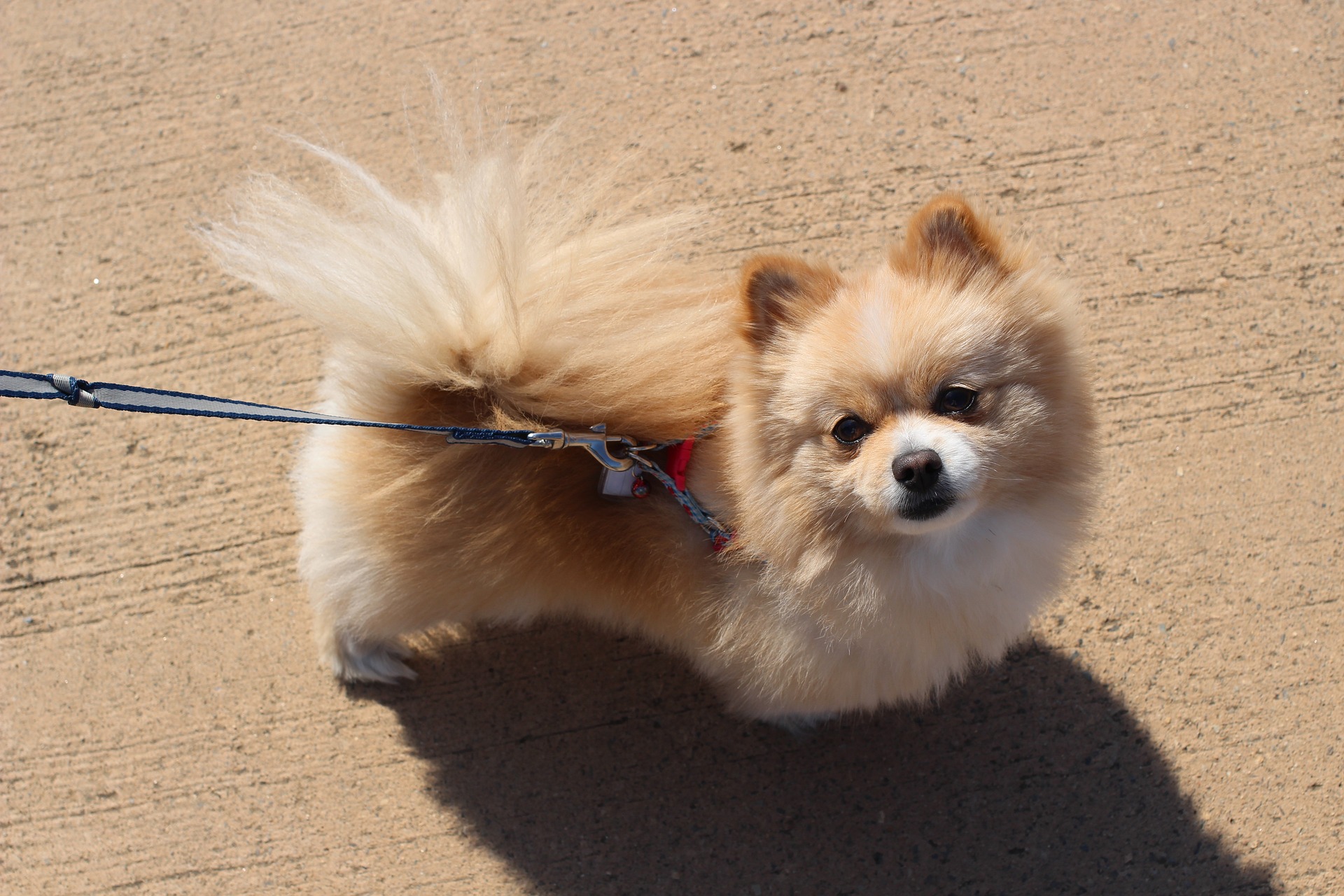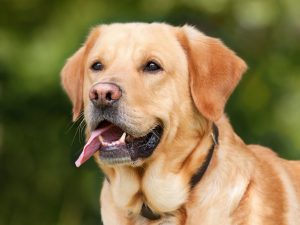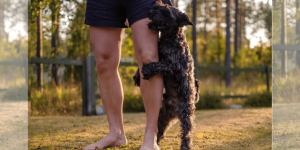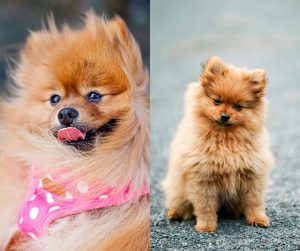When choosing a small dog companion, the American Eskimo Dog and the Pomeranian are two breeds that quickly capture attention with their adorable looks and playful dispositions.
While they both share the Spitz family’s signature fluffy coats and animated personalities, they each possess distinctive traits and heritage.
The American Eskimo Dog, affectionately known as the Eskie, radiates a friendly nature and possesses an impressive tolerance for children, making them an excellent family dog.
The Pomeranian, on the other hand, is much smaller in stature but holds a big-dog demeanor, often showing a preference for adult companionship over the hubbub of a bustling family environment.
Understanding the grooming and care requirements of both the American Eskimo Dog and the Pomeranian is crucial for prospective owners.
The Eskie boasts a beautiful white coat that requires regular grooming, whereas the Pomeranian, with its luxurious fur, demands high grooming attention to maintain its poofy appearance.
In terms of companionship, the American Eskimo typically enjoys the company of other dogs, while the Pomeranian may prefer solitude.
When considering these breeds for adoption, it’s important to evaluate how either would fit into one’s lifestyle, accounting for things like grooming time, exercise needs, and social preferences.
So, let’s take a look at the American Eskimo vs Pomeranian dog breed comparison. Which spitz dog is your choice?
Key Takeaways
- The American Eskimo Dog is a sociable family pet with a child-friendly attitude
- Pomeranians are high-spirited companions with a preference for lower-energy household dynamics
- Both breeds necessitate attentive grooming and match well with owners who can meet their care and companionship needs
Breed Origins and History
Discovering the beginnings of the American Eskimo Dog and the Pomeranian is a journey through time, back to when these breeds emerged in distinctive environments. Let’s unfold the past of these two popular dog breeds, known for their fluffy coats and bright, alert eyes.
American Eskimo
The American Eskimo Dog, despite its name, has its origins in Germany. It’s part of the spitz breed family, which includes Nordic dogs like the Samoyed.
The breed’s development was influenced by German immigrants, who brought their spitz-type dogs to the United States. Historically known as the German Spitz, the breed’s name was changed to American Eskimo Dog during World War I, due to anti-German sentiment.
It has been cherished in the United States for its multipurpose abilities, from circus performances to its role as a steadfast companion dog.
Pomeranian
Pomeranians also descend from the robust spitz breed, originating from a region between modern-day Poland and Germany.
They started out as larger dogs, used for herding animals and then were bred down in size to become the small companion dogs we adore today.
These toy-sized spitze made a significant royal impact when Queen Victoria allowed her smaller Pomeranian to be shown in a conformation show, setting a trend for the breed. Since then, Pomeranians have become favored for their petite size and spunky personality across various households.
You can say both dog breeds share similar traits with the German Spitz.
Physical Characteristics and Appearance
When comparing the American Eskimo dog to the Pomeranian, their fluffy coats and spirited expressions stand out. However, they do have distinct differences in size and grooming needs that are important for prospective owners to consider. The American Kennel Club sets the breed standard for both popular dog breeds.
Size and Weight
American Eskimo:
- Standard: Height: 15-19 inches; Weight: 25-35 pounds
- Miniature: Height: 12-15 inches; Weight: 10-20 pounds
- Toy: Height: 9-12 inches; Weight: 6-10 pounds
Pomeranian:
- Standard/Toy: Height: 6-7 inches; Weight: 3-7 pounds
The American Eskimo, often abbreviated as “Eskie,” comes in three size varieties—standard, miniature, and toy. The Pomeranian, on the other hand, is most commonly found in a single, much smaller toy size.
Coat and Maintenance
Both breeds boast a striking double coat that provides extra insulation.
The American Eskimo has a dense, white, or white with biscuit cream coat that is straight with a pronounced ruff around the neck, giving the breed a lion-like appearance. They are higher shedders, which translates to more frequent maintenance to keep their coat healthy and reduce the amount of hair in the home.
The Pomeranian also has a luscious double coat, but theirs often comes in a wider variety of colors.
While Pomeranians do shed, their smaller size and slower growth rate of hair make their grooming needs moderate compared to the Eskie.
Grooming Tips:
- American Eskimo: They require regular brushing, many times a week, to prevent matting and reduce shedding
- Pomeranian: They need brushing several times a week with more attention during their shedding seasons to keep their coat fluffy and healthy
In summary, while both dogs will leave a little fluff around the house for you to remember them by, the American Eskimo may cause you to spend a bit more time with the vacuum and grooming brush.
Personality and Temperament
When deciding between an American Eskimo and a Pomeranian, personality and temperament are crucial factors to consider. Both dog breeds are known for their spunky personalities, but they cater to different family dynamics and lifestyles.
Behavioral Traits
American Eskimo:
- Affectionate and Extrovert: They make outstanding companions, showing high levels of affection and thriving in social settings
- Energy Levels: Exhibits a lot of energy; needs sufficient exercise to stay balanced and happy
- Intelligence: Highly intelligent, which makes them relatively easy to train, although they can be a bit independent
Pomeranian:
- Independent and Extrovert: Pomeranians are confident and enjoy being the center of attention in any situation
- Stubborn Streak: This breed can showcase a stubborn personality, making consistent, patient training a must
- Social Needs: They don’t like being left alone for extended periods and can become vocal when craving attention
Suitability with Children and Pets
American Eskimo:
- Kid Friendly: Generally very tolerant and loving with children, making them a great addition to family settings.
- Pet Friendly: They usually do well with other pets, especially when socialized from a young age.
Pomeranian:
- With Children: While Pomeranians can be suitable for families, they may not tolerate the unintentional rough handling by younger children well
- With other Pets: While they can get along with other pets, their independent nature means they sometimes prefer being the only pet
Health and Wellness
When considering an American Eskimo or Pomeranian, it’s vital to understand the health and wellness aspects of these breeds. Each has its share of concerns and an expected span of life that future pet owners should be aware of. By knowing these factors, one can better care for their furry companion.
Common Health Concerns
American Eskimos and Pomeranians share some common health issues, which include hip dysplasia and progressive retinal atrophy, ailments that can affect their mobility and vision respectively.
Yet, each breed has its unique concerns. The American Eskimo can be prone to obesity and diabetes, emphasizing the need for proper diet and exercise. They may also face cataracts and epilepsy. Regular check-ups can help manage these conditions.
On the other hand, Pomeranians often deal with health problems like patellar luxation, where the knee cap slips out of place, and collapsed trachea, which can cause breathing issues.
Grooming is not just about looking good but also affects their wellness. Keeping their fur coat maintained helps ward off skin issues.
- American Eskimo
- Hip Dysplasia
- Progressive Retinal Atrophy
- Cataracts
- Epilepsy
- Obesity
- Diabetes
- Pomeranian
- Patellar Luxation
- Collapsed Trachea
- Skin issues due to grooming needs
Life Expectancy
Lifespan is a testament to a breed’s long-term health, and with proper care, these breeds can enjoy a full life.
The average lifespan for an American Eskimo is around 13-15 years, a testament to their resilience. The Pomeranian, with its spunky spirit, typically enjoys a similar average lifespan of 12-16 years.
Regular exercise adapts well to their exercise needs and is crucial for both their physical health and to keep those tails wagging happily for years to come. Because of its long lifespan, the Pomeranian healthy breed is a common choice for crossbreeding. One such option is the Siberian Husky mix and the Poodle Mix.
Care Requirements
When deciding between an American Eskimo vs Pomeranian dog breed, one should understand that these fluffy companions have different needs in terms of exercise, diet, grooming, and training.
Let’s break down what these entail to ensure a happy and healthy life for these furry friends.
Exercise and Diet
American Eskimo:
- Exercise: They have a moderate to high energy level, requiring daily exercise to stay fit and content
- Activities like walks, obedience, or rally can keep them mentally and physically stimulated
- Diet: A balanced diet catered to their size and energy needs is essential
- Focus on high-quality dog food that promotes a healthy coat and overall well-being
Pomeranian:
- Exercise: Pomeranians possess an energetic spirit but require less exercise than American Eskimos
- Short walks and indoor play suffice for their smaller frames
- Diet: They thrive on a diet formulated for small breeds
- Due to their intelligence, they respond well to training with treats as positive reinforcement
Grooming and Training
Grooming Needs:
- American Eskimo: Renowned shedders that need regular brushing, at least 2-3 times a week, to manage their dense, white coat and reduce shedding
- Pomeranian: High grooming needs; daily brushing is recommended to keep their thick fur free of mats and tangles
- They’re also prone to shedding, so routine grooming is paramount
Training:
- Trainability: Both breeds are intelligent and capable of learning quickly
- However, their smart nature also means they may get bored with repetitive tasks
- Barking: They’re vocal breeds, often using barking to express themselves
- Training Techniques: Positive reinforcement and consistency are key
- They benefit greatly from early socialization and obedience training
- Pomeranians may be slightly more challenging to house-train but respond well to patient, reward-based training methods
Adoption Considerations
When looking to adopt either an American Eskimo or a Pomeranian, prospective pet parents should weigh several factors to ensure they can provide the best home possible.
Lifestyle & Living Environment:
- American Eskimo: Thrives in an active environment and enjoys being part of a family or ‘pack’. They’re adaptable to both house and apartment living. However, they need sufficient exercise
- Pomeranian: Perfect for indoor living and smaller spaces like apartments. These little guys are active indoors and don’t require a yard, but they do need their daily playtime
Suitability:
- Both Breeds: Ideal for first-time dog owners due to their manageable size and personable nature
Companionship:
- Pomeranians: Prone to separation anxiety, they really hate to be alone. If you have a busy lifestyle, this breed may not be the best fit unless you have strategies to keep them company
- American Eskimo: More independent, but still values companionship and can develop anxiety if left alone for too long
Health Considerations:
- Potential Allergens: Both breeds have substantial fur that requires regular grooming, which can be an issue if allergies are present in the household
Social Interactions:
- Other Pets: Both breeds are generally pet-friendly, but introductions should be made cautiously
- Strangers: American Eskimos can be a bit reserved at first, making them good watchdogs. Pomeranians can be alert and may bark at new faces but are often quick to befriend
Guarding & Protection:
- While neither breed is specifically bred for guarding, their alert nature can provide a sense of protection through their watchful presence

